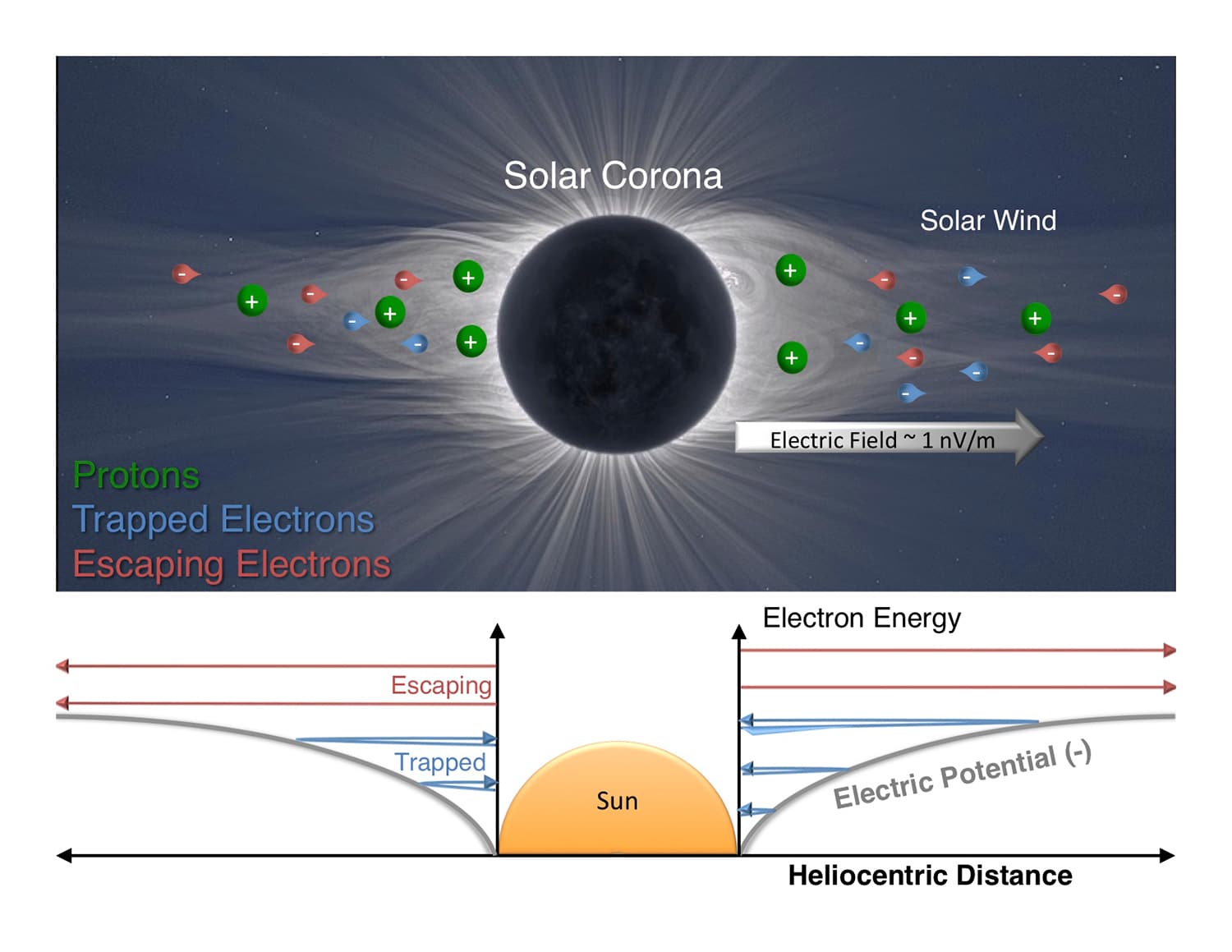
A new study by the University of Iowa reported the first definitive measurements of the sun’s electric field and its interaction with the solar wind.
Physicists calculated the distribution of electrons within the sun’s electric field to perceive the sun’s electric field’s size, breadth, and scope more clearly than past attempts.
This feat was made possible by using data from the Parker Solar Probe.
Jasper Halekas, associate professor in the Department of Physics and Astronomy at Iowa and the study’s corresponding author, said, “The key point I would make is you can’t make these measurements far away from the sun. You can only make them when you get close. It’s like trying to understand a waterfall by looking at the river a mile downstream. The measurements we made at 0.1 AU, we’re actually in the waterfall. The solar wind is still accelerating at that point. It’s just an awesome environment to be in.”
The stripping of hydrogen atoms in intense heat generated by fusion deep within the sun causes the interaction of protons and electrons. This interaction then generates the sun’s electric field.
Halekas said, “Electrons are trying to escape, but protons are trying to pull them back. And that is the electric field. If there were no electric field, all the electrons would rush away and be gone. But the electric field keeps it all together as one homogenous flow.”
“We measure the ones that come back and not the ones that don’t come back. There’s a boundary in energy there between the ones that escape the bowl and those that don’t, which can be measured. Since we’re close enough to the sun, we can make accurate measurements of electrons’ distribution before collisions occur further out that distort the boundary and obscure the imprint of the electric field.”
It was found that the sun’s electric field exerts some influence over the solar wind. These measurements can help physicists in learning more about solar wind.
Halekas said, “We can now put a number on how much of the acceleration is provided by the sun’s electric field. It looks like it’s a small part of the total. It’s not the main thing that gives the solar wind its kick. That then points to other mechanisms that might be giving the solar wind most of its kick.”
The paper, “The sunward electron deficit: A telltale sign of the sun’s electric potential,” was published online July 14 in The Astrophysical Journal.
Continue reading First definitive measurements of the sun’s electric field on Tech Explorist.
0 comments:
Post a Comment